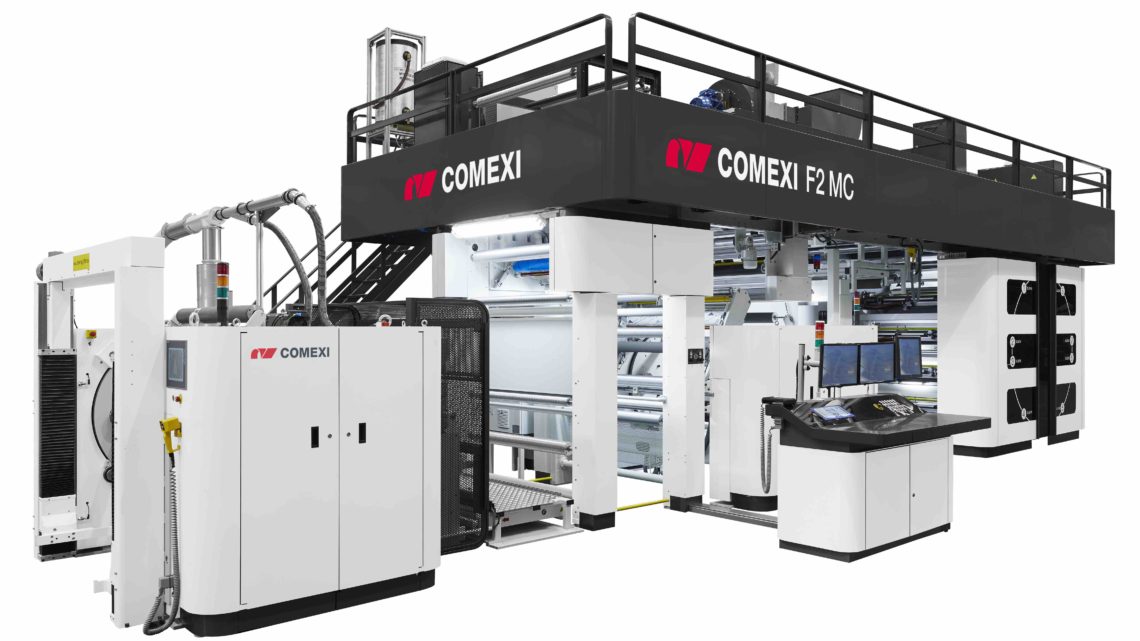
Comexi is committed to a circular economy strategy
July 25, 2018Comexi has once again carried out a revolutionary manoeuvre that sets it apart and positions it as a benchmark in the market. The innovative strategy of integrating environmental impact studies into its core business, conducting a Life Cycle Analysis (LCA) and the consequent Environment Product Declaration (DAP) of a flexographic printing machine – the Comexi F2 – will pave the way for the entire flexible printing sector.
This pioneering initiative aims to know and communicate at all times the environmental impact throughout the value chain of the manufacture of a flexographic printing product. Through the implementation of Ecodesign in their products, a circular economy strategy is established to provide its customers with products that are respectful of the environment throughout their life cycle.
This process can be extrapolated progressively to the entire Comexi product range, increasing knowledge of the company’s environmental impact, in order to minimize it.
“Comexi wants to contribute by example to raise awareness in industry and society of the need for deep reflection on current business models; we must go a step further and understand that transparency and the integration of the environment into our lives and into our companies are the basis of the only sustainable future we can build,” said Jeroen Van der Meer, CEO of the company.
The Life Cycle Analysis (LCA) has been carried out objectively and scientifically, in collaboration with the company Engloba Consulting, and following the corresponding international standards (ISO 140401, ISO 140442, ISO 140253 and the Product Category Rule UN CPC 449 Other special-purpose machinery and parts thereof). The Environmental Product Declaration (DAP) has been published in the Swedish program, The International EPD® System. The DAPs program with greater international recognition, is the first worldwide publication of a flexible printing machine, placing Comexi at the vanguard of sustainability in the sector.
An ACV, as already mentioned, is the only tool that allows the user to quantify – in an objective, scientific way, verified by an independent third party and based on international standards – the environmental impact associated with all the stages of the product’s life cycle, from the initial extraction of raw materials to the final waste management, taking in the complete process in between: the processing of materials, manufacturing, distribution, repairs and maintenance. It also evaluates, identifies and quantifies both the use of matter and energy and emissions to the environment to determine in an objective and unequivocal way those processes with the greatest impact on the environment and thereby implement strategies to lessen this impact.
A DAP is a type III ecolabel where the impact on the environment of the life cycle of a product or service is quantified and communicated; for example, the carbon footprint, the depletion of natural resources and water consumption, the production of waste or the use of recycled materials and materials sent for recycling at the end of their useful life. A DAP is done strictly following international standards and is verified by an independent third party, ensuring its credibility. For this first exercise, which will soon be joined by the rest of the company’s products, the Comexi F2 was chosen because it is a highly versatile flexographic printer that combines ergonomics and flexibility with the performance and reliability of the rest of the product range. In addition, it is a printer designed to print on different types of plastic materials, laminates and aluminium, providing finishes and print quality with unprecedented levels of productivity in the market.
